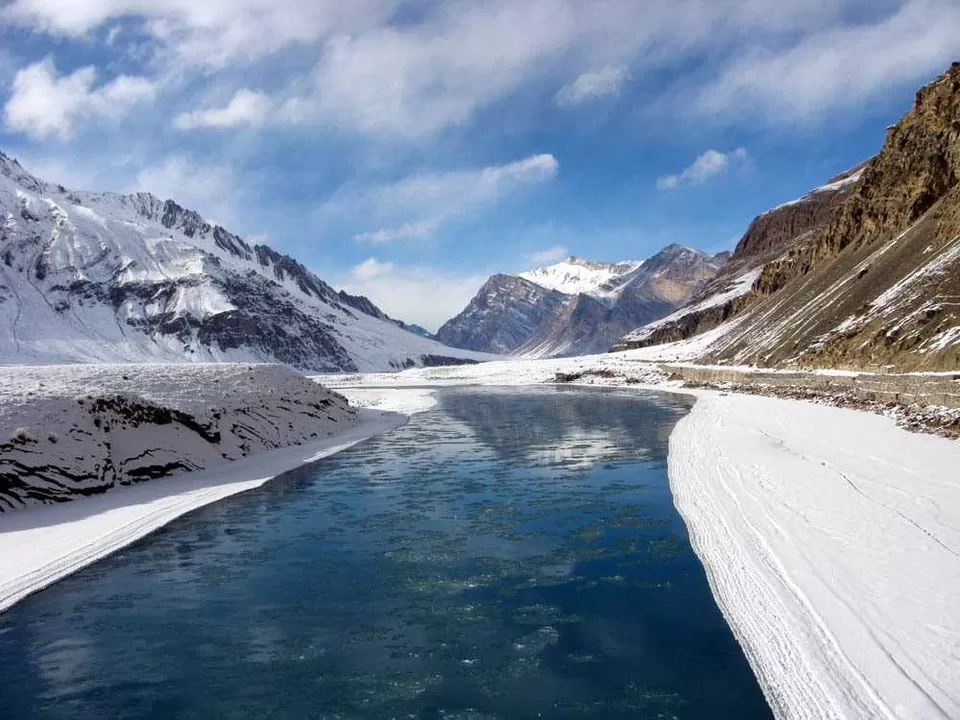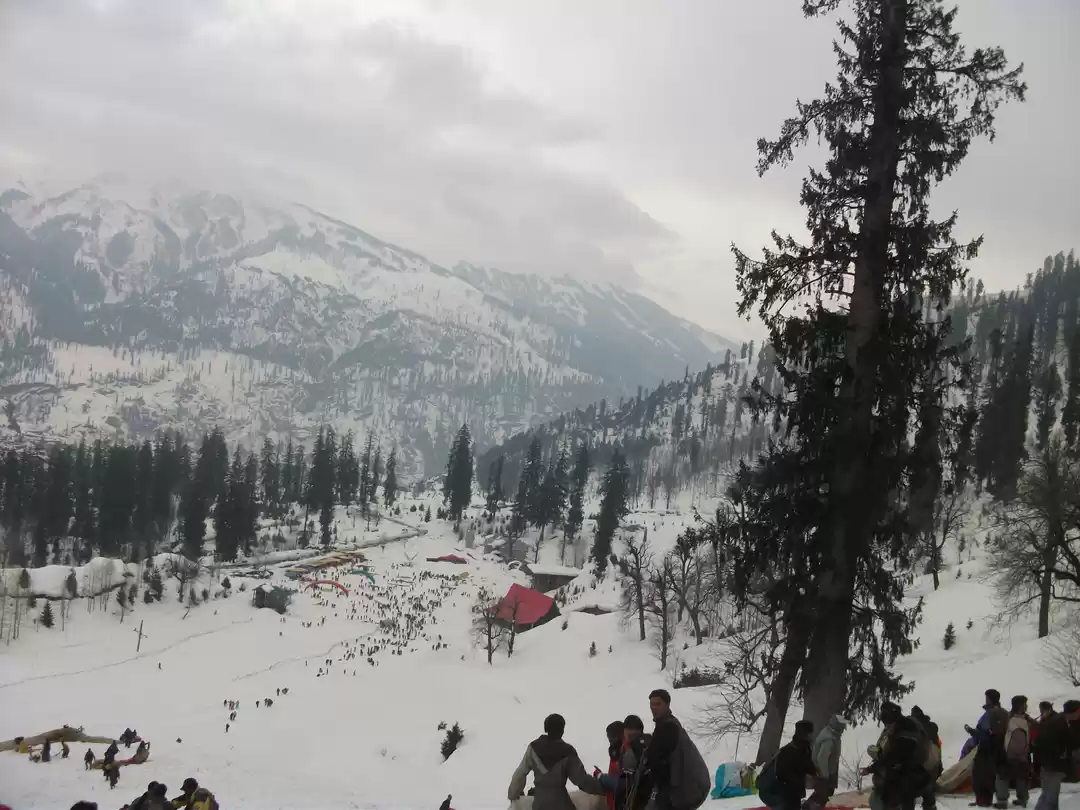Zanskar Valley is a part of the Greater Himalayas, situated at an altitude of 3,500 to 7,000 meters above sea level. It covers an area of about 5,000 square kilometers, and is surrounded by the Zanskar Range, the Ladakh Range, and the Indus Valley. It is also known as the Land of White Copper, because of its rich deposits of copper and other minerals.
Zanskar Valley is a paradise for nature lovers and adventure seekers, as it offers some of the most spectacular and diverse landscapes in the world. You can witness the frozen wonder of the Chadar Trek, the majestic beauty of the Suru Valley, the spiritual aura of the Phugtal Monastery, and the thrilling excitement of rafting on the Zanskar River. You can also explore the ancient and authentic culture of the Zanskari people, who have preserved their traditions and customs for centuries.
History and Culture of Zanskar Valley

Zanskar Valley has a rich and fascinating history and culture, that dates back to thousands of years. It has witnessed the rise and fall of various kingdoms and dynasties, the spread and influence of Buddhism, and the celebration and diversity of festivals.
Origin and Etymology of Zanskar Valley
The origin and etymology of Zanskar Valley are not very clear, but there are some theories and legends that try to explain them. One theory suggests that the name Zanskar derives from the Tibetan word “Zangskar”, which means “copper star”. This refers to the copper mines that are found in the region, and the star-shaped pattern that they form on the ground. Another theory proposes that the name Zanskar comes from the Sanskrit word “Janskar”, which means “the land of white copper”. This also relates to the abundance of copper and other minerals in the area.
According to a legend, Zanskar Valley was once a part of a vast lake, that was drained by the sage Padmasambhava, who is revered as the founder of Tibetan Buddhism. He created a passage through the mountains, and allowed the water to flow out. He then blessed the land and the people, and established many monasteries and temples in the region.
Rulers and Dynasties of Zanskar Valley
Zanskar Valley has a long and complex political and military history, that involves various rulers and dynasties. The earliest recorded history of Zanskar Valley dates back to the 8th century, when it was a part of the Tibetan Empire. It was then ruled by the local kings of the Zanskar Dynasty, who were loyal to the Tibetan kings. The Zanskar Dynasty lasted until the 15th century, when it was annexed by the Ladakh Kingdom.
The Ladakh Kingdom ruled over Zanskar Valley for about three centuries, until it was invaded by the Dogra forces of Jammu in the 19th century. The Dogra rule lasted until the 20th century, when Zanskar Valley became a part of the princely state of Jammu and Kashmir. After the independence and partition of India in 1947, Zanskar Valley remained a part of the Indian state of Jammu and Kashmir, until 2019, when it was reorganized into the union territory of Ladakh.
Religion and Spirituality of Zanskar Valley
Zanskar Valley is predominantly a Buddhist region, with about 95% of the population following the Tibetan branch of Buddhism. Buddhism was introduced to Zanskar Valley in the 8th century, by the famous Indian monk Padmasambhava, who is also known as Guru Rinpoche. He established many monasteries and temples in the region, and spread the teachings and practices of Buddhism among the people.
Zanskar Valley is home to some of the oldest and most sacred monasteries in the world, such as Karsha, Stongde, Sani, Bardan, and Phugtal. These monasteries belong to different schools of Tibetan Buddhism, such as Gelug, Kagyu, Drukpa, and Nyingma. They are the centers of religious and cultural activities, where monks and nuns live, study, and meditate.
Geography and Flora and Fauna of Zanskar Valley
Zanskar Valley is a unique and diverse region, that has a variety of geographical and ecological features. It has a rugged and mountainous terrain, a cold and dry climate, a rich and varied flora and fauna, and a valuable and abundant natural resources.
Landscape and Climate of Zanskar Valley
Zanskar Valley is a part of the Greater Himalayas, which is the highest and youngest mountain range in the world. It is surrounded by the Zanskar Range, the Ladakh Range, and the Indus Valley, which form natural boundaries and barriers. It has a complex and varied topography, with high peaks, deep valleys, narrow gorges, wide plains, and glacial lakes. Some of the prominent geographical features of Zanskar Valley are Zanskar River, Zanskar Range and Pensi La.
Flora and Fauna of Zanskar Valley
Zanskar Valley has a rich and varied flora and fauna, that reflects its diverse and extreme environment. It has a sparse and alpine vegetation, that consists of grasses, shrubs, herbs, and flowers. Some of the common plants found in Zanskar Valley are juniper, birch, willow, poplar, wild rose, and edelweiss. It also has a rare and endangered medicinal plant, called yartsa gunbu, which is a fungus that grows on caterpillars, and is used for various health benefits.
Zanskar Valley has a diverse and exotic wildlife, that includes mammals, birds, reptiles, and insects. Some of the common animals found in Zanskar Valley are yak, ibex, bharal, marmot, snow leopard, wolf, fox, and bear.
Natural Resources of Zanskar Valley
Zanskar Valley has a valuable and abundant natural resources, that are both renewable and non-renewable. It has a rich and varied mineral resources, such as copper, gold, silver, lead, zinc, iron, and uranium. It also has a potential and untapped hydroelectric resources, as it has many rivers, streams, and glaciers, that can generate electricity. It also has a promising and emerging solar and wind resources, as it has a high altitude, a clear sky, and a strong wind.
Attractions and Activities in Zanskar Valley
Zanskar Valley is a paradise for nature lovers and adventure seekers, as it offers some of the most spectacular and diverse attractions and activities in the world.
1. Chadar Trek
Chadar Trek is one of the most challenging and thrilling treks in the world, where you walk on a frozen river in sub-zero temperatures. The Chadar Trek is a winter trek, that takes place from January to February, when the Zanskar River freezes and forms a thick layer of ice, called the Chadar. The Chadar Trek covers a distance of about 105 kilometers, and takes about 9 days to complete. It starts from Chilling, a village near Leh, and ends at Naerak, a village in Zanskar Valley. Along the way, you can witness the stunning scenery of the Zanskar Gorge, the frozen waterfalls, the ice caves, and the snow-capped mountains.
2. Phugtal Monastery
Phugtal Monastery is one of the most spectacular and isolated monasteries in the world, where you can witness the ancient and authentic Buddhist culture and practices. The Phugtal Monastery is a cave monastery, that is built on a cliff, and overlooks the Lungnak River. It is accessible only by foot, and takes about 7 hours to reach from Padum, the nearest town in Zanskar Valley. The Phugtal Monastery was founded in the 12th century, by the Tibetan saint Phugtal Lama, who meditated in the cave for many years. It belongs to the Gelug school of Tibetan Buddhism, and houses about 70 monks and nuns, who live, study, and meditate in the monastery.
3. Suru Valley
Suru Valley is one of the most scenic and fertile valleys in the region, where you can enjoy the lush greenery, the colorful flowers, and the majestic views of the Himalayas. The Suru Valley is a part of the Suru River basin, which originates from the Panzella Glacier, and flows northward for about 185 kilometers, before joining the Indus River.
4. Rafting
Rafting is one of the most exciting and adventurous activities in the region, where you can experience the rapids and the currents of the Zanskar River. Rafting is a summer activity, that takes place from July to September, when the water level is high and the weather is warm. Rafting covers a distance of about 30 kilometers, and takes about 3 hours to complete. It starts from Chilling, a village near Leh, and ends at Nimmu, a village near the confluence of the Zanskar and the Indus rivers.
Best Time to Visit Zanskar Valley
Zanskar Valley has a seasonal variation in its weather and accessibility, that affects the best time to visit the region. The best time to visit Zanskar Valley depends on your preference and purpose, as each season has its own advantages and disadvantages. Here is a brief overview of the best time to visit Zanskar Valley, based on the temperature and the road conditions.
Summer Season
The summer season in Zanskar Valley lasts from June to September, when the weather is pleasant and sunny, and the roads are open and accessible. The average temperature ranges from 15°C to 25°C, and the rainfall is scarce.
Winter Season
The winter season in Zanskar Valley lasts from December to March, when the weather is cold and snowy, and the roads are closed and inaccessible, except for the Chadar Trek. The average temperature ranges from -20°C to -5°C, and the snowfall is heavy.
Spring and Autumn Seasons
The spring and autumn seasons in Zanskar Valley are transitional, with moderate temperature and precipitation. The spring season lasts from April to May, and the autumn season lasts from October to November. The average temperature ranges from 5°C to 15°C, and the rainfall is moderate.
How to Reach Zanskar Valley
Zanskar Valley is a remote and isolated region, that is not easily accessible by any mode of transportation.
By Air
The nearest airport to Zanskar Valley is the Leh Kushok Bakula Rimpochee Airport, which is located in Leh, the capital of Ladakh. It is about 230 kilometers away from Zanskar Valley, and takes about 6 hours to reach by road.
By Road
The nearest bus station to Zanskar Valley is the Kargil Bus Stand, which is located in Kargil, the second largest town in Ladakh. It is about 105 kilometers away from Zanskar Valley, and takes about 4 hours to reach by road. The Kargil Bus Stand is connected to many major cities and towns in India, such as Srinagar, Jammu, Manali, and Leh, by various bus operators, such as JKSRTC, HRTC, and HPTDC.
By Rail
The nearest railway station to Zanskar Valley is the Jammu Tawi Railway Station, which is located in Jammu, the winter capital of Jammu and Kashmir. It is about 650 kilometers away from Zanskar Valley, and takes about 14 hours to reach by road.
Zanskar Valley is a region of immense natural beauty and cultural heritage, that attracts many tourists and travelers from all over the world. It is a place where you can experience the adventure and thrill of the Himalayas, the spirituality and peace of Buddhism, and the diversity and richness of Ladakh. It is a place that you should not miss, if you are looking for a unique and unforgettable journey.

















































